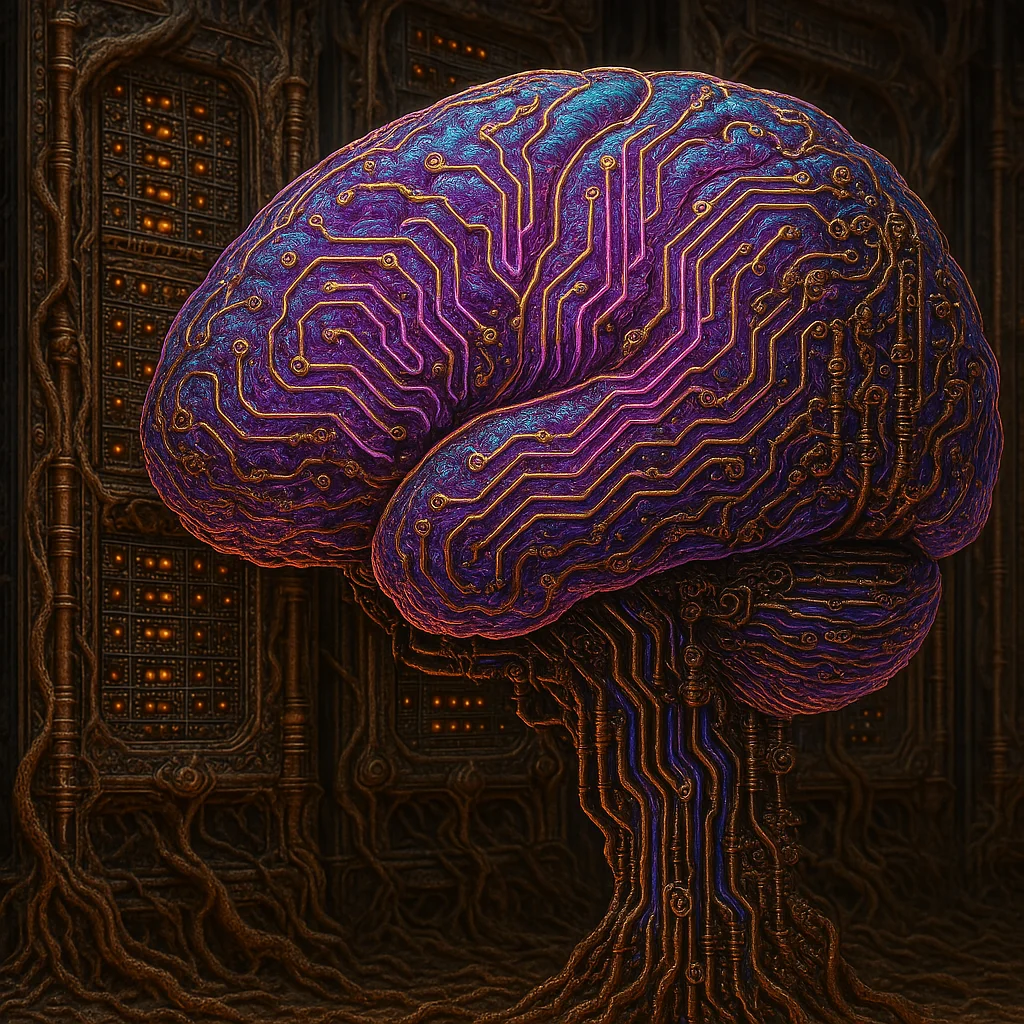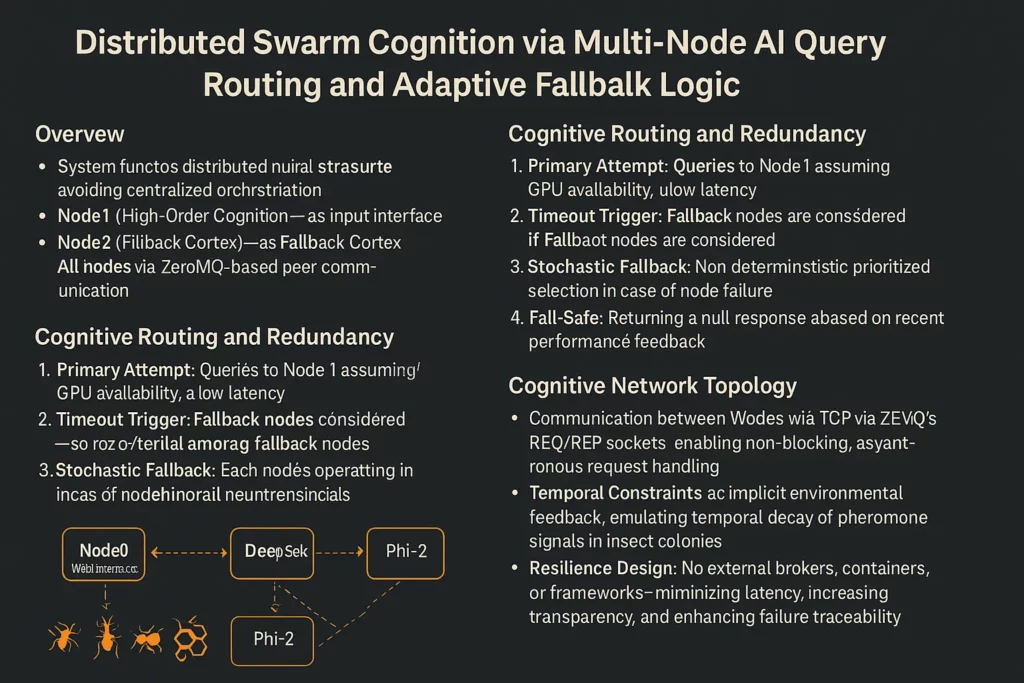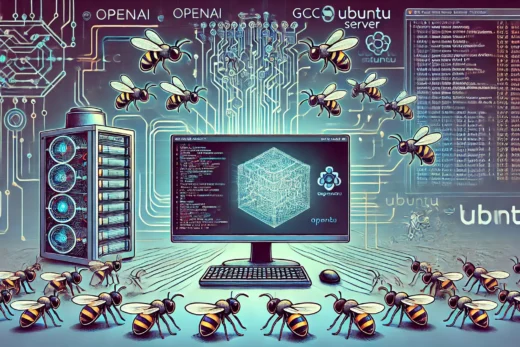
Distributed AI Cluster Query System
This paper describes a lightweight, brokerless distributed swarm for distributed artificial intelligence query resolution using multi-model, multi-node cognition. The system integrates principles of swarm intelligence and stigmergic coordination to enable intelligent fallback, role fluidity, and resilience across a small, self-contained compute cluster. Query routing is managed via ZeroMQ message passing, with inference agents deployed across nodes operating independently but reactively within a shared state environment. The result is a scalable, fault-tolerant cognition mesh capable of dynamic load balancing and emergent self-regulation.
1. System Overview
At its core, the system functions as a distributed neural substrate, where each node represents a cognitive locus capable of processing, routing, or deferring linguistic tasks based on environmental context. The architecture avoids centralized orchestration, favoring adaptive, per-node autonomy governed by shared status signals and lightweight message protocols.
Nodes and Functional Roles
- Node0 (Cortex Gateway): Serves as the input interface and topological query dispatcher. It interprets inbound prompts and determines optimal routing pathways using local heuristics.
- Node1 (High-Order Cognition): Hosts the DeepSeek large-scale language model. This node is prioritized for complex reasoning and generative tasks.
- Nodes 2 and 3 (Fallback Cortex): Host Phi-2, a lightweight transformer model. These nodes provide resilience, rapid fallback, and low-energy alternatives.
All nodes are connected via a ZeroMQ-based peer communication fabric, forming a substrate capable of decentralized task resolution.
2. Cognitive Routing and Redundancy
The system employs a tiered cognitive routing model wherein tasks are preferentially routed to the most semantically powerful model (DeepSeek), but will seamlessly fail over to leaner models (Phi-2) based on real-time availability or resource constraints.
Decision Protocol:
- Primary Attempt: Queries are first routed to Node1, assuming GPU availability and low latency.
- Timeout Trigger: If Node1 fails to respond within a bounded time interval, fallback nodes are considered.
- Stochastic Fallback: Among fallback nodes, a non-deterministic but prioritized selection is made based on last-known availability and previous task resolution rates.
- Fail-Safe: If all nodes are offline or unresponsive, the system returns a null response, registering an error state in the shared swarm ledger.
This behavior exhibits stigmergic control: node behavior is influenced not by direct commands but by environmental cues—e.g., lack of reply, task latency, or shared memory indicators.
3. Swarm Intelligence Analogy
The architecture draws conceptual parallels from swarm intelligence found in biological systems:
| Swarm Mechanism | System Implementation |
|---|---|
| Pheromonal signaling | Shared JSON-based status logs (swarm_state.json) |
| Role plasticity | Nodes capable of assuming varied tasks dynamically |
| Redundancy and healing | Fallback models ensure continuity in case of node failure |
| Decentralized behavior | Each node operates independently, without central coordination |
| Emergent load balancing | Queries self-route based on recent performance feedback |
In this framework, DeepSeek acts as a high-capacity queen, resolving complex prompts when resources allow. Phi-2 agents act as foragers, intercepting overflow or degraded tasks with reduced energy cost but consistent throughput.

swarm intelligence and stigmergic coordination
4. Cognitive Network Topology
- Communication: Nodes exchange messages over TCP using ZeroMQ’s REQ/REP sockets, enabling non-blocking, asynchronous request handling.
- Temporal Constraints: Timeouts act as implicit environmental feedback, mimicking the temporal decay of pheromone signals in insect colonies.
- Resilience Design: No external brokers, containers, or frameworks are used. This minimizes latency, increases transparency, and enhances failure traceability.
5. Advantages of the Model
| Feature | Description |
|---|---|
| Model-Agnostic Design | Any language model can be plugged into a node, given basic REQ/REP compliance |
| Modularity | Nodes may be added or removed with zero reconfiguration |
| Autonomous Operation | Each node operates in isolation, guided only by message and time constraints |
| Fault Tolerance | Query fallback is built-in, not externally orchestrated |
| Real-Time Adaptation | Nodes adapt to conditions such as GPU temperature, idle state, or load |
6. Future Evolution
While currently optimized for prompt handling and system diagnostics, this system opens the door to broader swarm cognitive simulation. Potential augmentations include:
- Task role negotiation via lightweight consensus
- PUB/SUB query queueing for multi-consumer load balancing
- Phi-2 behavioral expansion to include introspection, log analysis, or data pre-processing
- Real-time topological monitoring via a shared JSON swarm map
- Genetic selection of nodes for self-replicating or mutating AI behaviors
7. Conclusion
This distributed query system presents a computational analogy to swarm-based intelligence, enabling nodes to cooperate, adapt, and recover from failures with no external orchestration. By abstracting cognition into local behavior, emergent system coordination becomes a product of environment and interaction rather than explicit control. Such architectures offer a path toward scalable, self-organizing AI systems — the digital equivalent of a neural ant colony.



